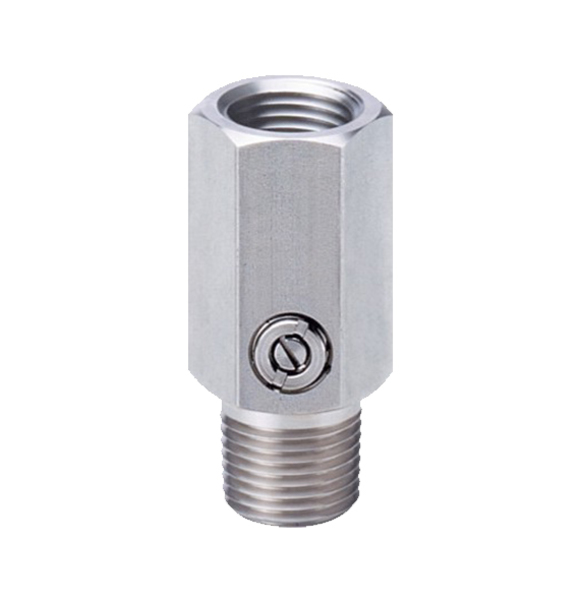
PD02 Pressure Snubber
PD02 Pressure Snubber
The Ashcroft® PD02 pressure snubber is used for protecting measurement instruments from sudden pressure increases or fluctuations.
Features & Properties
Use & Application
Downloads
Features & Properties
Use & Application
The PD02 pressure snubber is ideal where process protection is required.
Process Market:
- Oil and Gas
- Refineries
- Chemical and Petrochemical
- Water and Wastewater
Process Applications:
- Biogas and Biodiesel
Downloads
The Ashcroft® PD02 adjustable pressure snubber is used to protecting pressure instruments from sudden pressure increase or fluctuations. This enables sensing instruments to provide consistent readings, while extending service life. An ideal solution for satisfying applications with challenging requirements.
Key Features
NACE compliant assemblies
Wetted parts compatible with many processes
Material certificates to EN 10204:2004 3.1
External pulsation adjustment to meet a variety of applications
Markets & Applications
Water and Wastewater
Chemical and Petrochemical
Oil and Gas
Refinery
- Specifications
- Downloads
Wetted Parts Material
Stainless steel 316L (1.4404)
Monel
Hastelloy C
Brass
Temperature Rating
max. 120°C
Process Connection Style
Threaded
Instrument Connection Style
Threaded
Pressure Rating
PN250
PN400
Process Connection Size
½ NPT
G ½
¼ NPT
G ¼
M20x1.5
- Category: Pulsation Dampener
We’re glad to be there for you personally.
Siamo personalmente a vostra disposizione!
Nous sommes personnellement là pour vous.
Şahsen yanınızda olmaktan mutluluk duyuyoruz.
We zijn blij dat we er persoonlijk voor u kunnen zijn.
Wir sind persönlich für Sie da!
Siamo personalmente a vostra disposizione!
Nous sommes personnellement là pour vous!
Select your Region!








